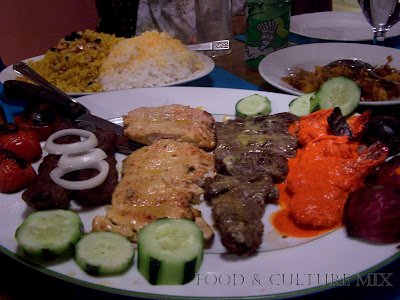Today, as my Muslim friends celebrate the end of Ramadan, I would like to write about one of my favorite meat dishes: shish kebab. I had the opportunity of enjoying lamb kebab for 5 years when I lived with my family in Central Asia. Nothing beats the taste of the lamb in that area!
The last time I was in Manila, a group of friends invited me to a nice Persian-Arabian theme restaurant and we ordered kebabs of various meat, except pork. I was excited that after many years I could satisfy my cravings for lamb kebabs. Sad to say, the kebabs were not that great. But it was,overall, a good dinner, though. Much credit goes to the wonderful fellowship we had around the table.
Kebab, an Arabic word for "to burn or char", is a wide variety of meat dishes originating in turkey, Iraq and later adopted by the Middle East and Asia Minor, and now found worldwide. (Wikipedia). The traditional meat for kebab is lamb but now it can be of different meat including seafood and even veggies!
I know I have a photo of my favorite authentic kebab in Central Asia but I have to dig up my picture files from years ago before I can show it here. Anyways, I'm still happy with this latest one I have. It's still a delicious plate, isn't it?
The last time I was in Manila, a group of friends invited me to a nice Persian-Arabian theme restaurant and we ordered kebabs of various meat, except pork. I was excited that after many years I could satisfy my cravings for lamb kebabs. Sad to say, the kebabs were not that great. But it was,overall, a good dinner, though. Much credit goes to the wonderful fellowship we had around the table.
 |
| Lamb. chicken, beef, and seafood kebabs at a Persian-Arabian Restaurant. |
I know I have a photo of my favorite authentic kebab in Central Asia but I have to dig up my picture files from years ago before I can show it here. Anyways, I'm still happy with this latest one I have. It's still a delicious plate, isn't it?















